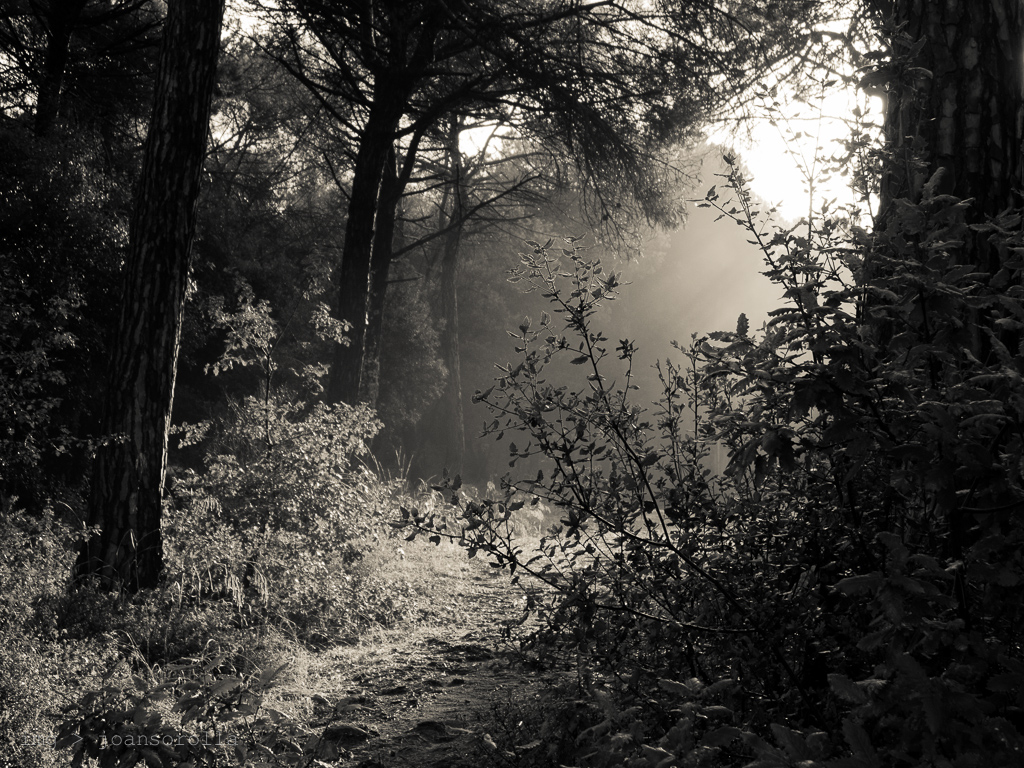 Plant Biology
Plant Biology
Out of the darkness: how plants prepare for, and endure, life in the sun

All plants must sense, and respond to, their environment. This perception is of crucial importance to developing seedlings. Initially, they must grow in subterranean darkness in order to reach the surface - a process known as skotomorphogenesis (development in the dark). Once at the surface, and emerging into sunlight, plants grow more slowly, redirecting their energy to producing leaves, and packing them with the green light-capturing pigment chlorophyll. This process is called photomorphogenesis (development in the light), and it is controlled by proteins called phytochromes, which are able to sense sunlight, and then switch-on genes required to use light as a source of energy.
In addition to this light-sensing mechanism, plants perceive and respond to the luminosity of their environment through a process called retrograde signalling. In this particular case, messages are passed from the cellular machinery to the cell nucleus (the information centre of the cell). The content of these messages tells the cell to put the brakes on photomorphogenesis, and prevent the plant from trying to harness the sun's energy before its cells are ready to do so.
In summary, on one side, the plant perceives light and starts preparing itself for life in the sun; on the other side, the plant remains in standby mode starting to harvest the sun's energy only when it will be ready to do so. Not respecting this balance would lead the plant to sustain heavy damage from which it would not recover easily. On the other hand, spending too much time in standby mode would not allow the plant to gather the necessary energy to survive. Consequently, striking the right balance is crucial for a developing seedling! These two signalling pathways, photomorphogenesis and retrograde signalling, have been the focus of extensive study; but, it was not clear how they coordinate to control seedlings' development.
Now researchers at the Centre for Research in Agricultural Genomics and the Department of Bioengineering in Barcelona have collaborated with scientists at the University of California and the US Department of Agriculture to understand how this delicate balance between the two pathways is established and maintained. In order to do so, they studied the genes that determine photomorphogenesis in the model plant thale cress (Arabidopsis thaliana), and they measured the length of seedlings' shoots, and the opening of the emerging leaves, as physical indicators of the fact that the plant exited stand-by mode, and triggered photomorphogenesis.
The researchers utilized two key tools to investigate these signalling pathways. The first was a modified strain of Arabidopsis in which the light-sensing pathway was permanently switched-on. Consequently, these plants were permanently undergoing photomorphogenesis, even in conditions where they should not have done so. The second tool was a chemical called lincomycin, which switches-on retrograde signalling - telling the cell to put the brakes on photomorphogenesis. By combining these two tools, and monitoring blockages along the two signalling pathways - like a plumber locating blockages in a series of water pipes - the researchers were able to identify the point at which the two pathways meet. This junction is a protein called GLK1. Extending previous studies, they showed that GLK1 is responsible for the promotion of photomorphogenesis, and, consistent with what happens in the plant, it is switched-off by retrograde signalling.
Furthermore, they demonstrated that when light intensity is very strong, retrograde signalling blocks completely the production of GLK1. Consequently, photomorphogenesis returns to stand-by mode, and plants close their leaves and turn away from the light. Therefore, the retrograde signalling pathway also appears to act as a safety mechanism: it protects plants from exposing themselves to a potentially damaging level of sunlight, for example, when the sun is at its strongest, or when the plant's light harvesting apparatus is damaged and not able to capture the sun's light.
This work is helping scientists understand the biochemical changes that take place in developing plants, how they adapt to changes in their environment, and how they protect themselves from potentially damaging levels of bright sunlight.
Original Article:
Martín G, Leivar P, Ludevid D, Tepperman J, Quail P, Monte E. Phytochrome and retrograde signalling pathways converge to antagonistically regulate a light-induced transcriptional network. Nature Communications. 2016;7:11431. doi:10.1038/ncomms11431.Edited by:
Massimo Caine , Founder and Director
We thought you might like
Attractive in the dark — how petunias may help to feed humanity
Apr 27, 2016 in Plant Biology | 3 min read by Graham RobinsonCapturing Mother Nature at work: seeing how plants make vitamin B6
Feb 16, 2017 in Plant Biology | 4 min read by Graham Robinson , Teresa FitzpatrickOne root for every soil: a double-personality tale
Sep 12, 2017 in Plant Biology | 3 min read by Laura LorenzoSmart plant defense against a stealthy herbivore
Sep 28, 2018 in Plant Biology | 3.5 min read by Karen J. KlothMore from Plant Biology
Unravelling the Secrets of Pine Roots: A Tale of Nutrition and Adaptation
Oct 20, 2023 in Plant Biology | 3.5 min read by Rafael Cañas , Francisco OrtigosaStressful memories help plants resist caterpillars
Oct 2, 2023 in Plant Biology | 3.5 min read by Samuel Wilkinson , Adam Hannan Parker , Jurriaan TonDecoding the genome of a jackfruit that grows all year round
Sep 6, 2023 in Plant Biology | 3.5 min read by Tofazzal IslamLife after logging: the tale of recovering tropical forests
Aug 21, 2023 in Plant Biology | 3.5 min read by Maria Mills , Terhi RiuttaEditor's picks
Trending now
Popular topics


